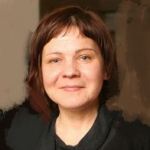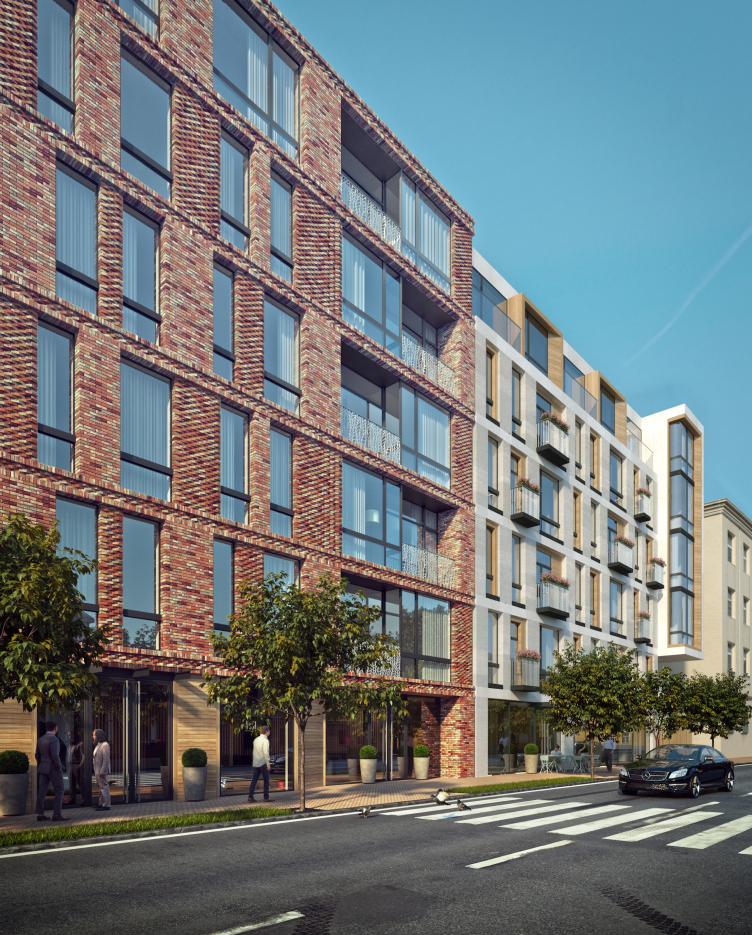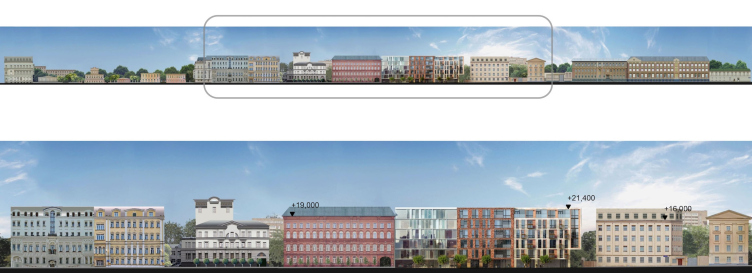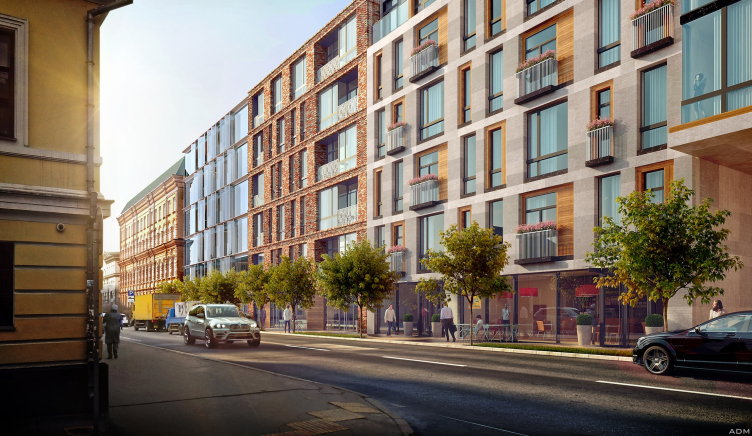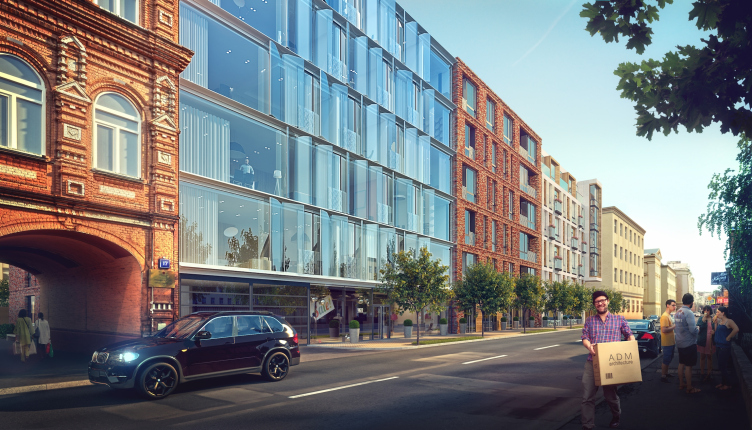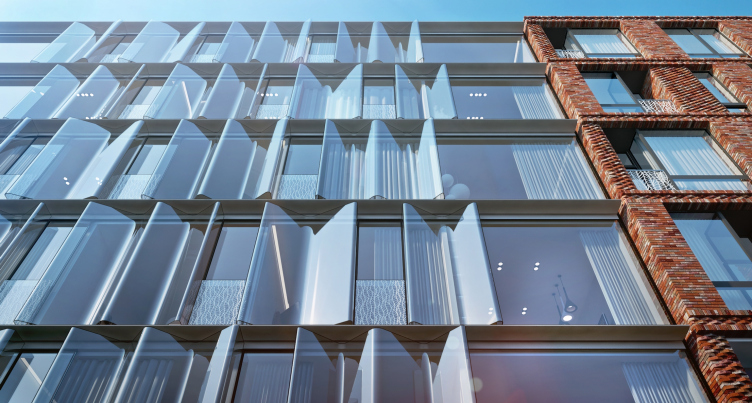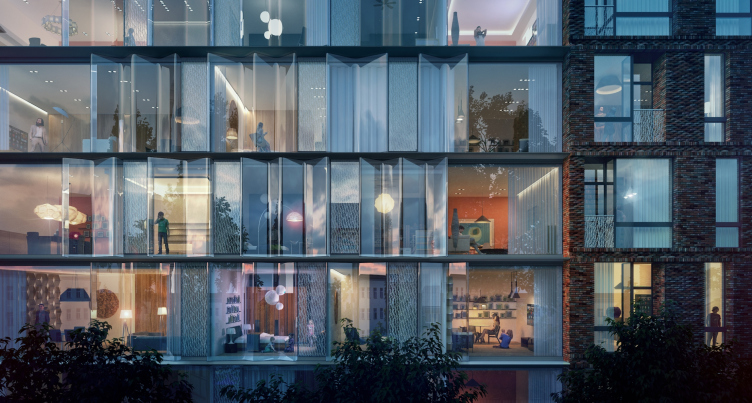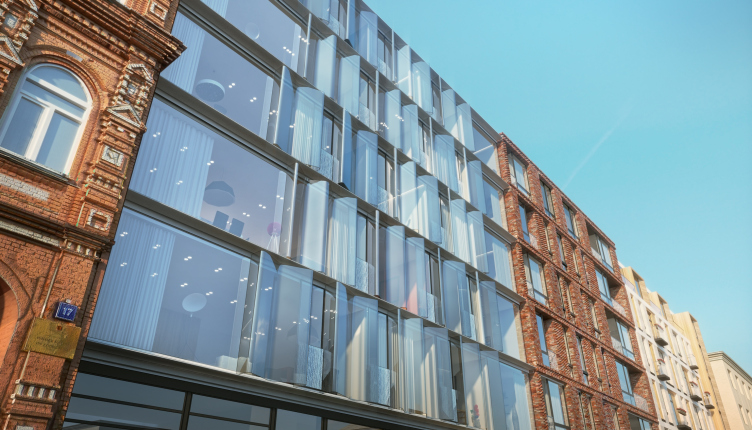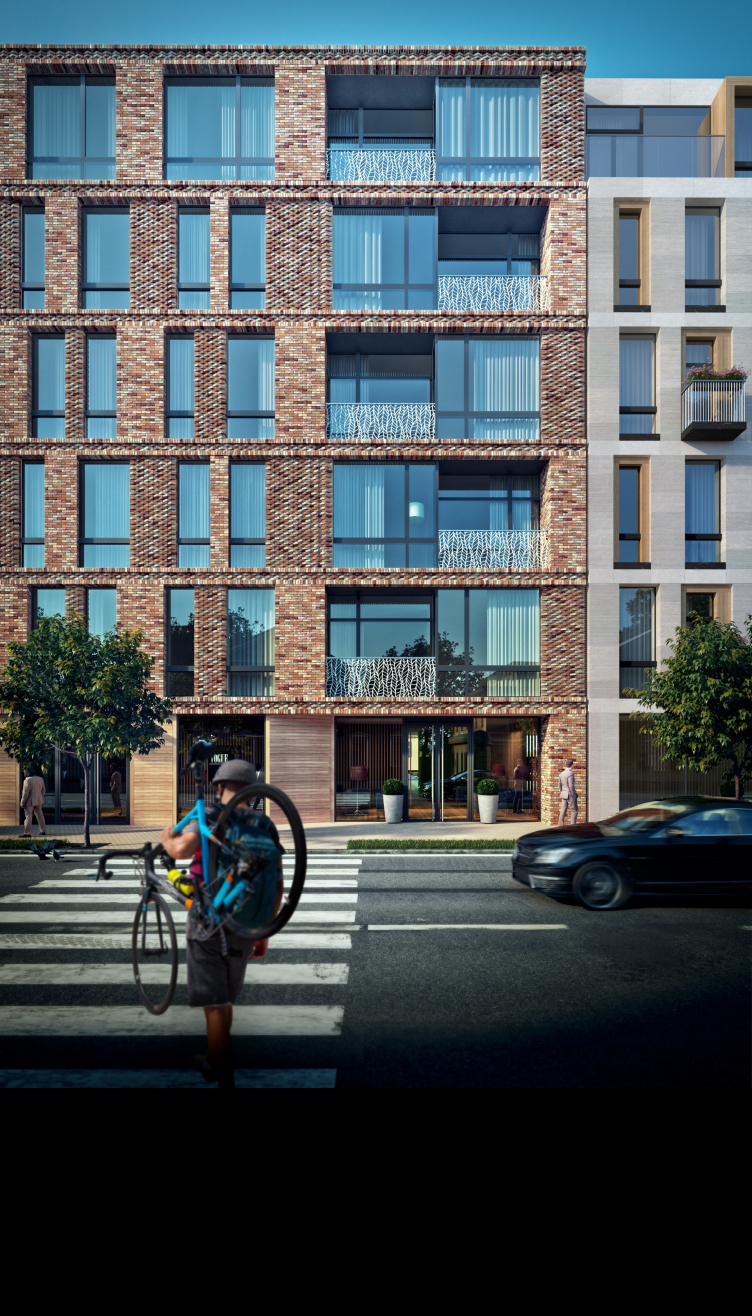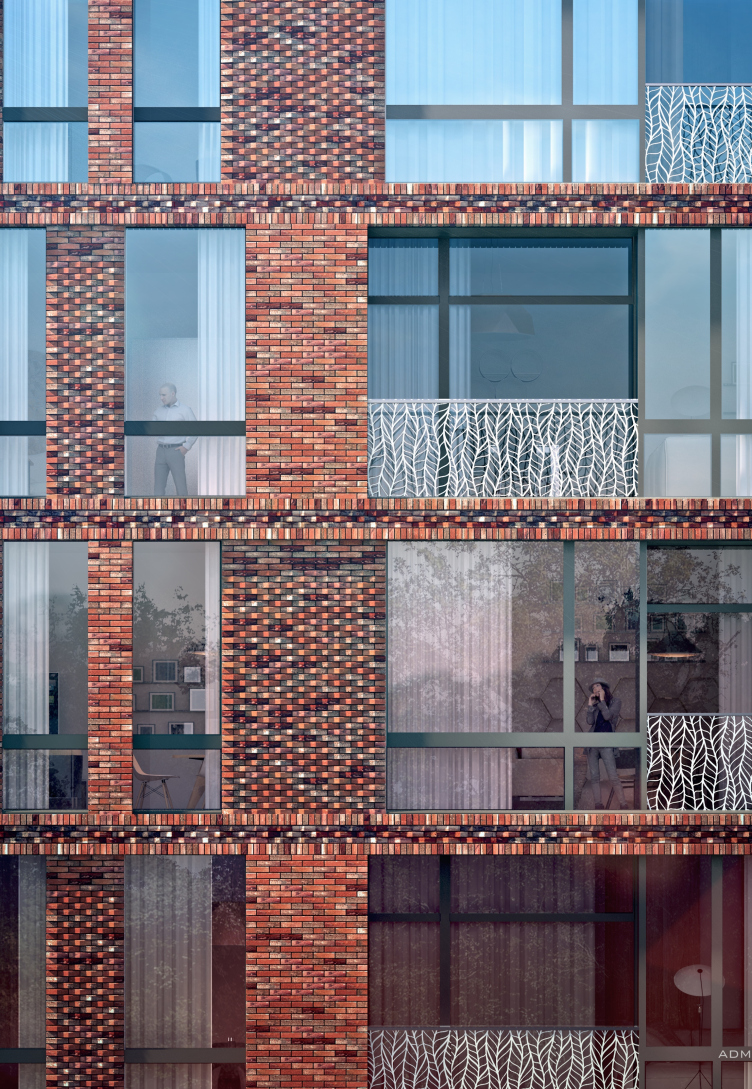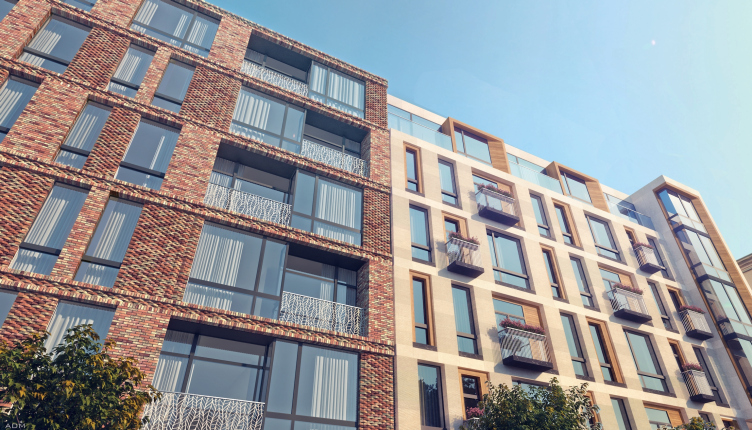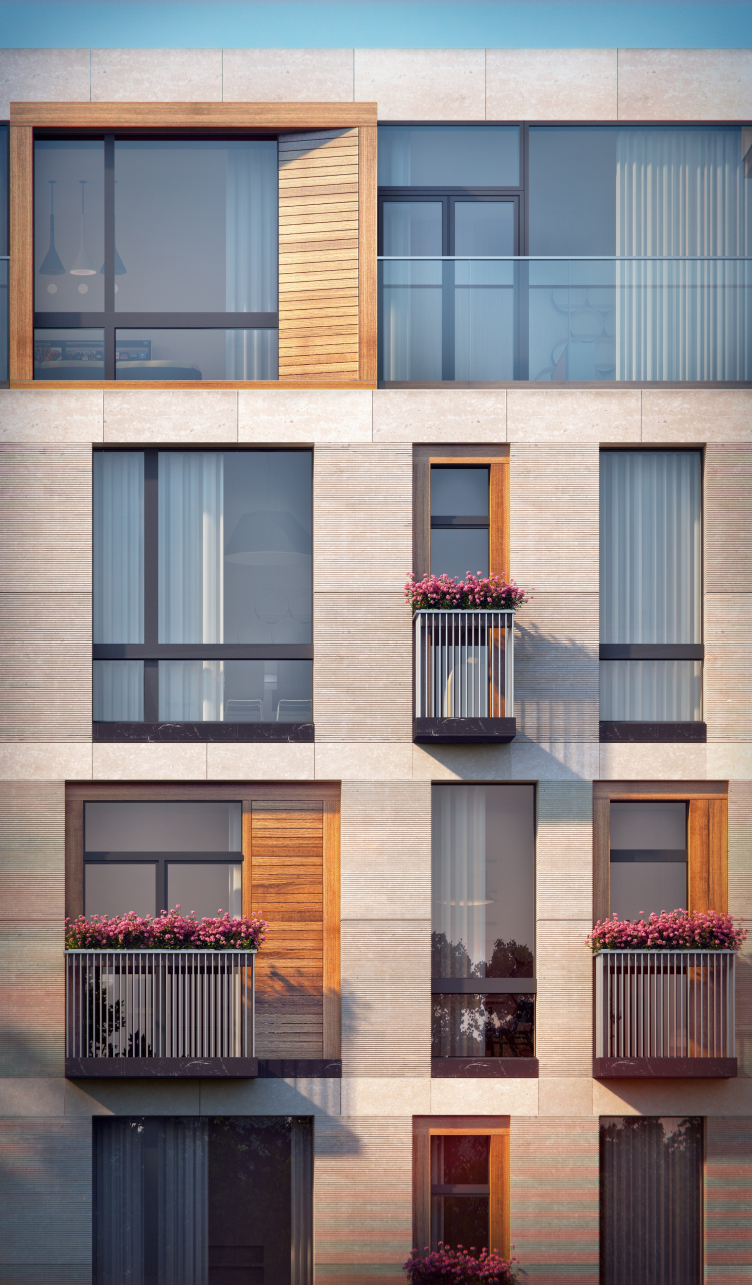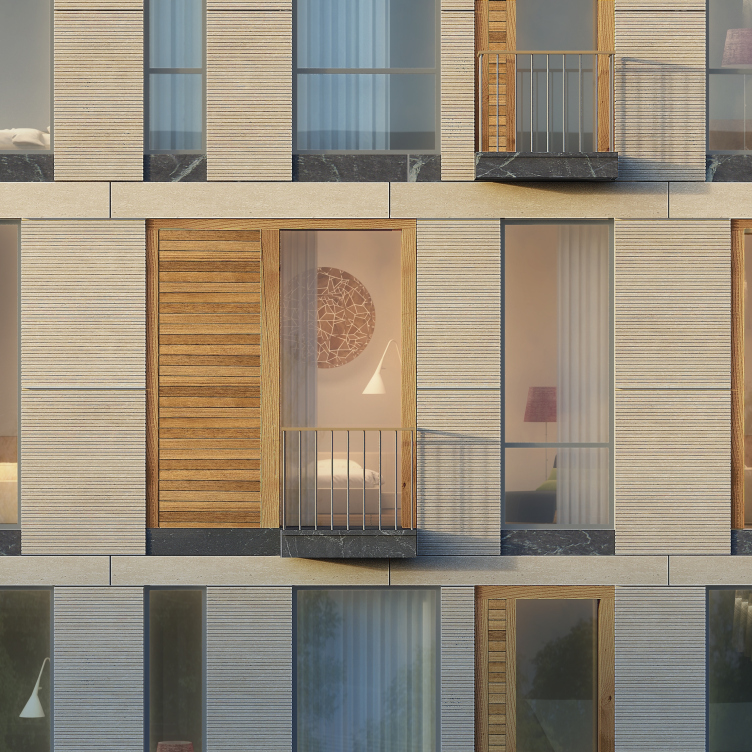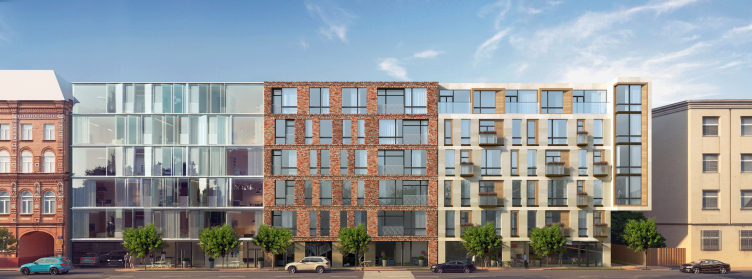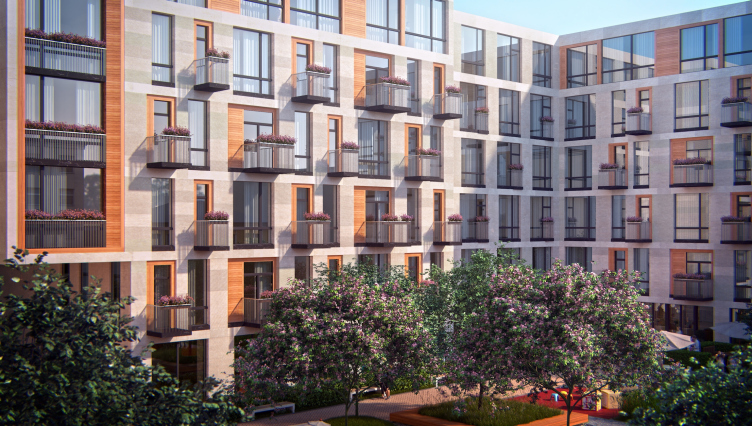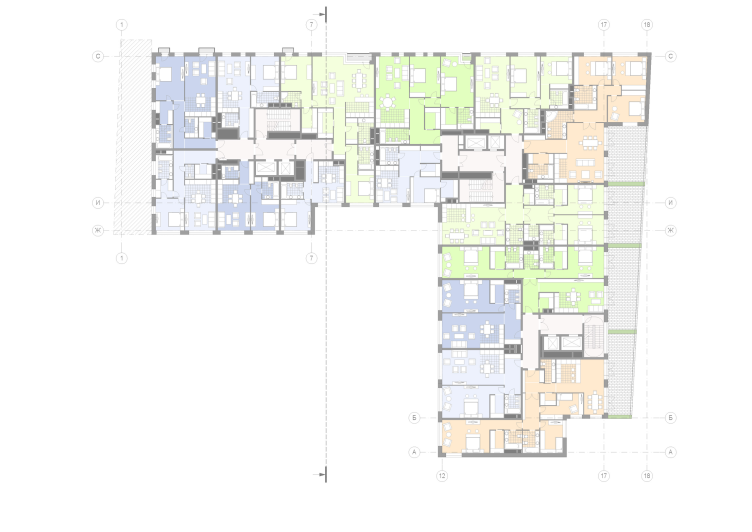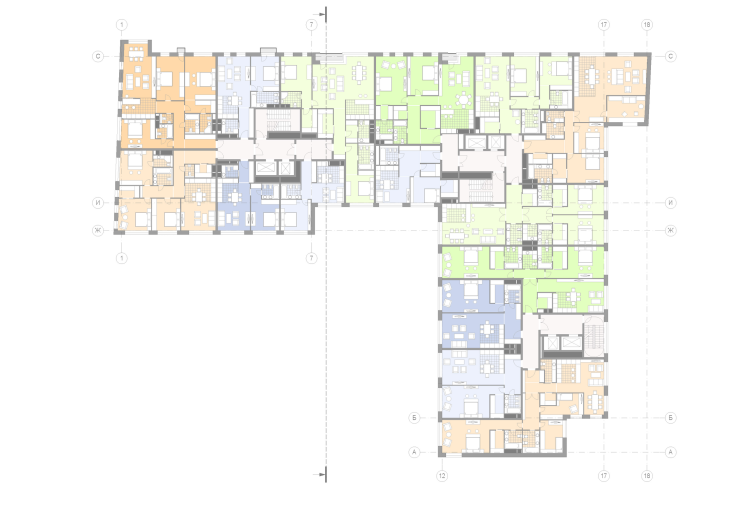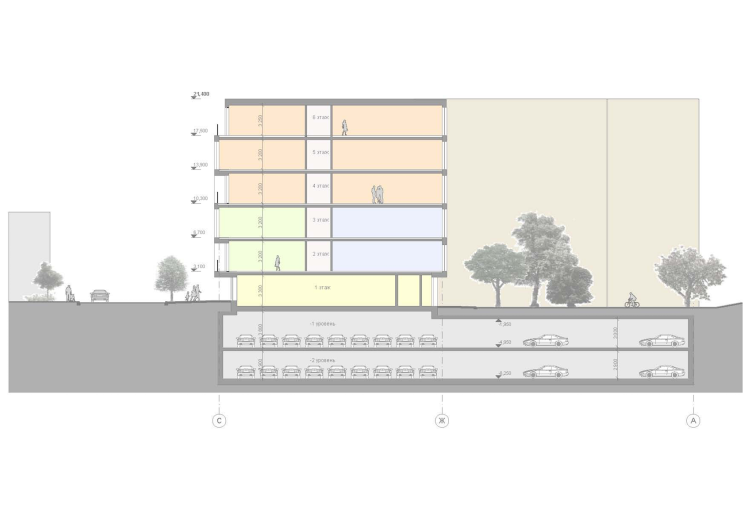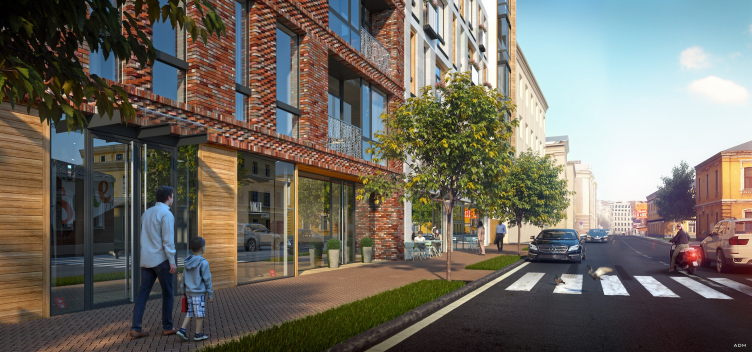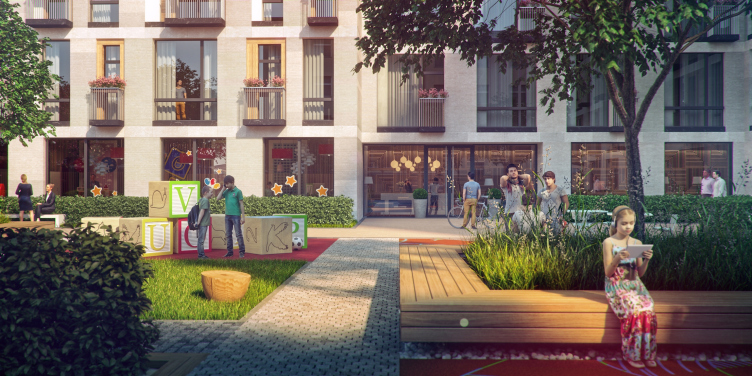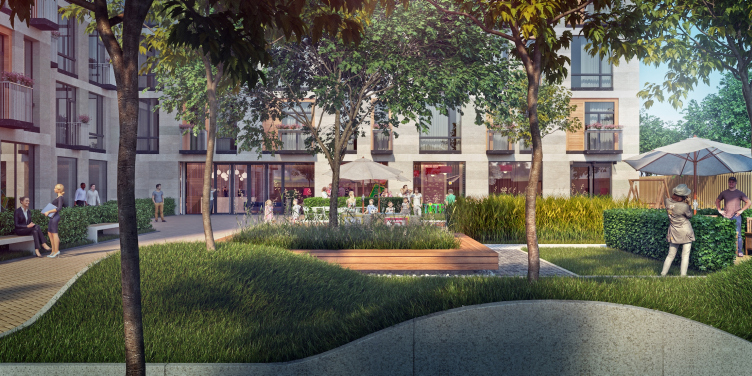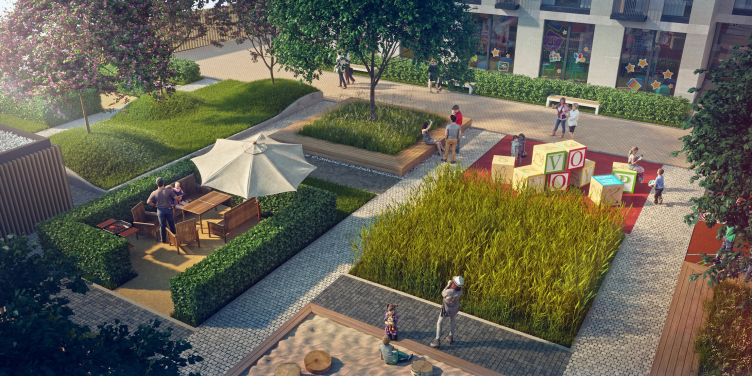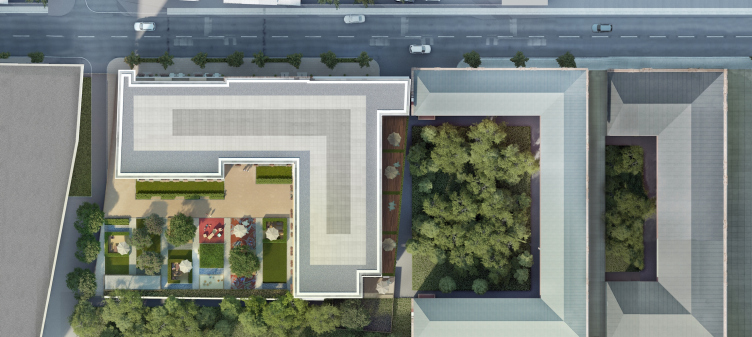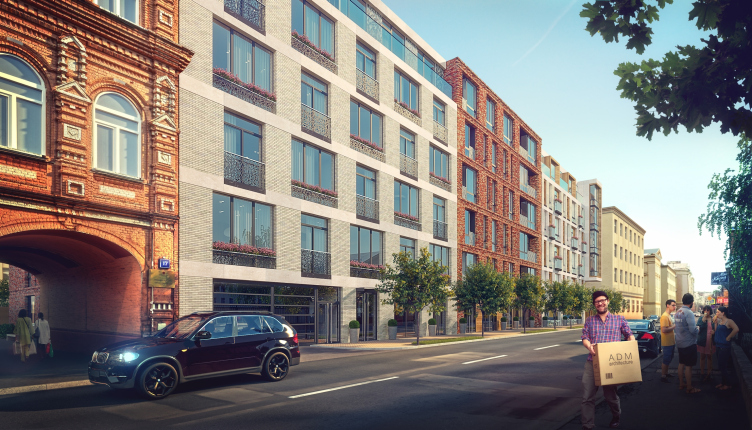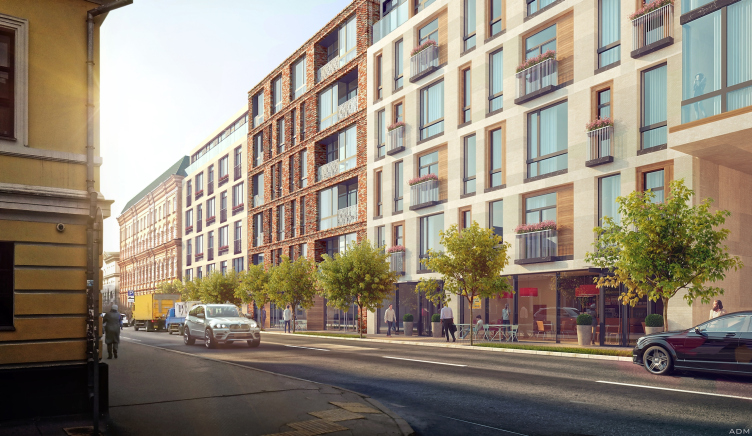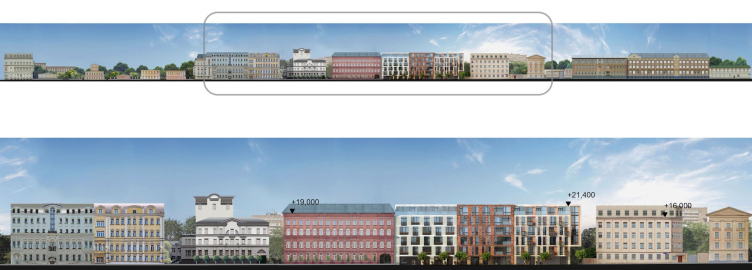We already shared about this project within the framework of our report from the meeting of Moscow's architectural board on the 1st of April. The developer company Sminex is doing a housing project in a 0.366-hectare land site in Zamoskvorechye on the Malaya Ordynka Street. The new building will occupy the plot that has been hitherto occupied by a soviet-era building that used to have offices in it, thus switching the function of the building to a residential one. The house responds to the historical scale of Zamoskvorechye, one of the best-kept territories of Moscow's city center in terms of preserving the historical fabric of the city. The lengthy street front of the house got divided into three parts - which makes the house look to a casual observer as three houses instead of one.
The housing project on the Malaya Ordynka Street. Project, 2016 © ADM
The housing project on the Malaya Ordynka Street. Development drawing. Project, 2016 © ADM
The housing project on the Malaya Ordynka Street. Location plan. Project, 2016 © ADM
Copyright © ADM
The housing project on the Malaya Ordynka Street. Facade. Version 2. Project, 2016 © ADM
The housing project on the Malaya Ordynka Street. The main facade. Version 2. Project, 2016 © ADM
The housing project on the Malaya Ordynka Street. The main facade. Version 2. Project, 2016 © ADM
The idea is seemingly simple: one volume with three façades aimed at a dialogue with the context of the historical city - meaningfully, the name of the company stands for "dialogue with the megalopolis". The three materials are very much like the elements: glass, brick, and stone. The latter two are typical for Zamoskvorechye, and, if one is to take into consideration the fact that the stone façade has a lot of wooden inserts in it, it turns out that all the texture themes are explored to the fullest. Historically, Moscow and many other Russian cities used the white stone predominantly for the basement floors of the buildings, whilst the brick was the material used for the first floor, and wood - for the second; higher up, there was an attic, then the so-called "upper room", and then the sky.
The housing project on the Malaya Ordynka Street. Fragment of the main facade. Version 2. Project, 2016 © ADM
The housing project on the Malaya Ordynka Street. Fragment of the main facade. Version 2. Project, 2016 © ADM
The housing project on the Malaya Ordynka Street. Fragment of the main facade. Version 2. Project, 2016 © ADM
The housing project on the Malaya Ordynka Street. The main facade. Version 2. Project, 2016 © ADM
The housing project on the Malaya Ordynka Street. The main facade. Version 2. Project, 2016 © ADM
The most agile and "living" element in this combination is the "air" of the glass. At a first glance one clearly sees that this is anything but a reflection of a Zamoskvorechye garden, or, rather, not just one but, above all, an ultra-modernist gem in the old "stone-and-wood" Moscow. The structures of heat-bent glass that serve as the second contour of the façade cover the bedrooms that are situated under the central part of the façade. On the sides, where the living rooms are situated, the glass elements are wide, and they are not covered with anything - thus, the transparency of the glass façade becomes uneven, as if we are looking at a crumpled folded curtain.
The housing project on the Malaya Ordynka Street. A fragment of the main facade. Version 2. Project, 2016 © ADM
The housing project on the Malaya Ordynka Street. The main facade. Version 2. Project, 2016 © ADM
The housing project on the Malaya Ordynka Street. A fragment of the main facade. Version 2. Project, 2016 © ADM
The housing project on the Malaya Ordynka Street. A fragment of the main facade. Version 2. Project, 2016 © ADM
The housing project on the Malaya Ordynka Street. Facade. Version 2. Project, 2016
Copyright © ADM
The flat glass windows of the living room provide a smooth joint with the central brick façade, which, as we remember, uses its play of light and shadow, as well as its material, to echo a building of a pseudo-Russian style more than a hundred years old, where now one of the departments of the Higher School of Economics is accommodated. It is planned that half of all the surfaces of the new façade will be decorated with a band of brick angles protruding from the masonry: in addition, the bricks will not only be turned at an angle but also in such a way as if they were chasing one another, the angle over the ledge being there not only in the intermediate floors but also in some of the partitions.
The housing project on the Malaya Ordynka Street. The yard facade. Version 2. Project, 2016 © ADM
The housing project on the Malaya Ordynka Street. The yard facade. Version 2. Project, 2016 © ADM
The housing project on the Malaya Ordynka Street. The yard facade. Version 2. Project, 2016 © ADM
The housing project on the Malaya Ordynka Street. Plan of the 2nd floor
Copyright © ADM
The housing project on the Malaya Ordynka Street. Plan of the 3rd-5th floors
Copyright © ADM
The third façade represents a peaceful and respectable pause and a transition to the neighboring building of the 1930's (still a bit on the constructivist side but already with pilasters). This façade is made from plaster of a light sandy color that in the partitions between the windows is covered with a rugged pattern of narrow stripes - it echoes the decorative "brick" bands described above but it is more on the fine side. The corner cantilever overhangs at a 6-meter height; underneath it, there is a fire driveway that leads inside the yard. It is also an obvious reference to the architecture of the laconic soviet art-deco of the 1930's, of which the neighboring house is a vivid representative.
The housing project on the Malaya Ordynka Street. Section view
Copyright © ADM
The housing project on the Malaya Ordynka Street. Organization of the street © ADM
The housing project on the Malaya Ordynka Street. Organization of the yard © ADM
The housing project on the Malaya Ordynka Street. Organization of the yard. Project, 2016 © ADM
The housing project on the Malaya Ordynka Street. Organization of the yard. Project, 2016 © ADM
The bottom floors, as is the urban rule of the historical center, are occupied by cafés and shops. For the exception of emergency services, the yard is vehicle-free.
The housing project on the Malaya Ordynka Street. Masterplan
Copyright © ADM
The housing project on the Malaya Ordynka Street. The main facade. Version 1. Project, 2016 © ADM
The housing project on the Malaya Ordynka Street. The main facade. Project, 2016 © ADM
The housing project on the Malaya Ordynka Street. The main facade. Version 1. Project, 2016 © ADM
The housing project on the Malaya Ordynka Street. Facade. Version 1. Project, 2016 © ADM
The yard was carefully though out down to the last detail. One will see here landscaping work, baskets of trimmed bushes, and some tall-growing grass plants. According to Andrew Romanov, the yard is divided into peculiar "green rooms" - in order to make a comparatively small territory house a fairly large number of people without them gathering in one place and getting in one another's way. One should hardly mention that the pavement that runs along the street also has lawns and a few trees upon it.
The housing project on the Malaya Ordynka Street. A fragment of the main facade. Version 1. Project, 2016 © ADM
The housing project on the Malaya Ordynka Street. Facade. Version 1. Project, 2016 © ADM
There was yet another version of the project: what is now the dramatically expressive glass façade was a more reserved brick one. The place here got an even "echoing" alternation of large light-beige and red-brick spots.
